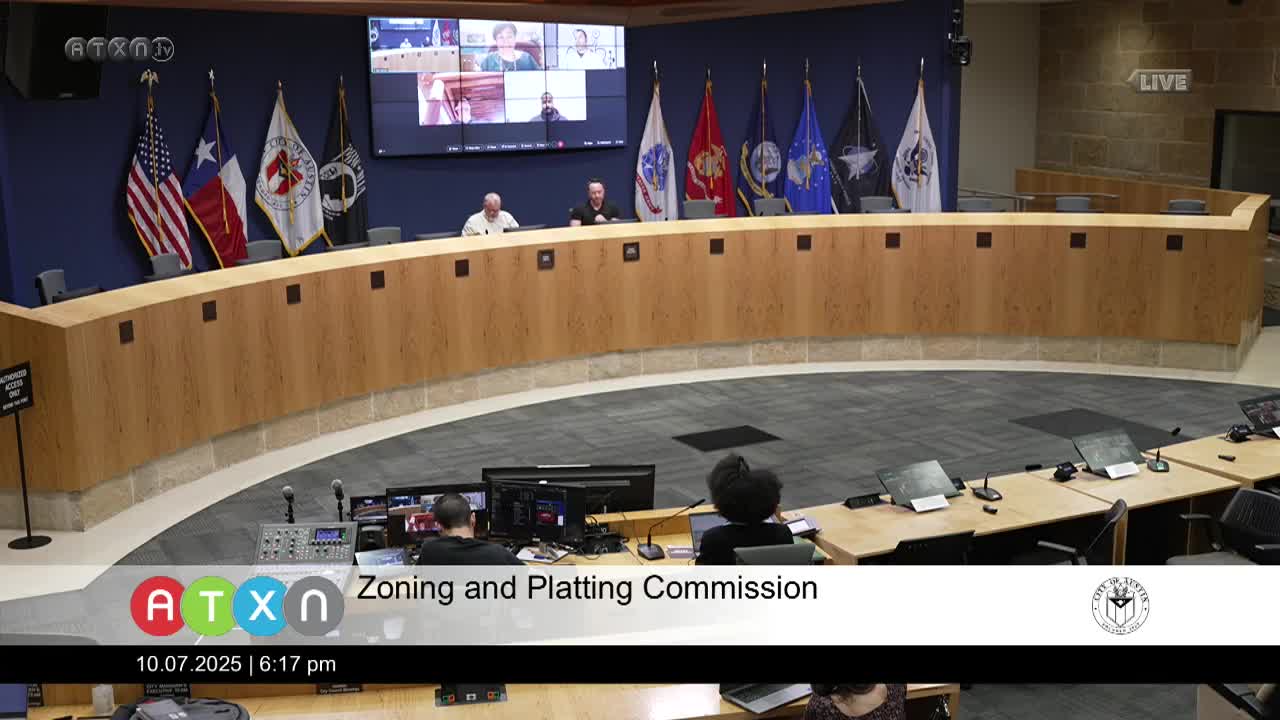Planning Commission Evaluates Role and Future of Joint Committees Amid Senate Bill 840 Impact
October 07, 2025 | Austin, Travis County, Texas
This article was created by AI summarizing key points discussed. AI makes mistakes, so for full details and context, please refer to the video of the full meeting. Please report any errors so we can fix them. Report an error »

In a recent meeting of the Zoning and Platting Commission in Austin, Texas, discussions centered on the roles and responsibilities of the commission and the planning commission, highlighting concerns about efficiency and resource allocation. The meeting revealed a growing frustration among commissioners regarding the lack of progress and engagement in various committees, particularly the small area planning joint committee, which has struggled to meet quorum for several consecutive sessions.
One significant topic was the impact of Senate Bill 840 on downtown zoning regulations. The bill is set to eliminate limits on Floor Area Ratio (FAR), prompting staff to propose the introduction of a height limit to maintain balance in zoning regulations. This change aims to address potential overdevelopment in the downtown area, reflecting ongoing concerns about urban density and infrastructure capacity.
The commission also discussed upcoming meetings and the need for a comprehensive plan joint committee to address amendments to city code Title 25. These amendments would modify permitted uses along the Imagine Dawson corridors and residential zones, indicating a proactive approach to adapting zoning laws to meet community needs.
However, the meeting underscored a critical issue: the small area planning joint committee has not met since April due to a lack of participation, raising questions about its future viability. Some commissioners expressed a desire to abolish this committee if it continues to be ineffective, suggesting a reevaluation of how resources are allocated among committees.
Overall, the discussions reflect a pressing need for the Zoning and Platting Commission to streamline its operations and enhance collaboration with the planning commission. As the city grapples with growth and development challenges, these conversations will be crucial in shaping Austin's urban landscape and ensuring that zoning regulations effectively serve the community's interests. The commission's next steps will involve further discussions on committee structures and potential amendments to zoning laws, with the aim of fostering a more responsive and efficient planning process.
One significant topic was the impact of Senate Bill 840 on downtown zoning regulations. The bill is set to eliminate limits on Floor Area Ratio (FAR), prompting staff to propose the introduction of a height limit to maintain balance in zoning regulations. This change aims to address potential overdevelopment in the downtown area, reflecting ongoing concerns about urban density and infrastructure capacity.
The commission also discussed upcoming meetings and the need for a comprehensive plan joint committee to address amendments to city code Title 25. These amendments would modify permitted uses along the Imagine Dawson corridors and residential zones, indicating a proactive approach to adapting zoning laws to meet community needs.
However, the meeting underscored a critical issue: the small area planning joint committee has not met since April due to a lack of participation, raising questions about its future viability. Some commissioners expressed a desire to abolish this committee if it continues to be ineffective, suggesting a reevaluation of how resources are allocated among committees.
Overall, the discussions reflect a pressing need for the Zoning and Platting Commission to streamline its operations and enhance collaboration with the planning commission. As the city grapples with growth and development challenges, these conversations will be crucial in shaping Austin's urban landscape and ensuring that zoning regulations effectively serve the community's interests. The commission's next steps will involve further discussions on committee structures and potential amendments to zoning laws, with the aim of fostering a more responsive and efficient planning process.
View full meeting
This article is based on a recent meeting—watch the full video and explore the complete transcript for deeper insights into the discussion.
View full meeting
